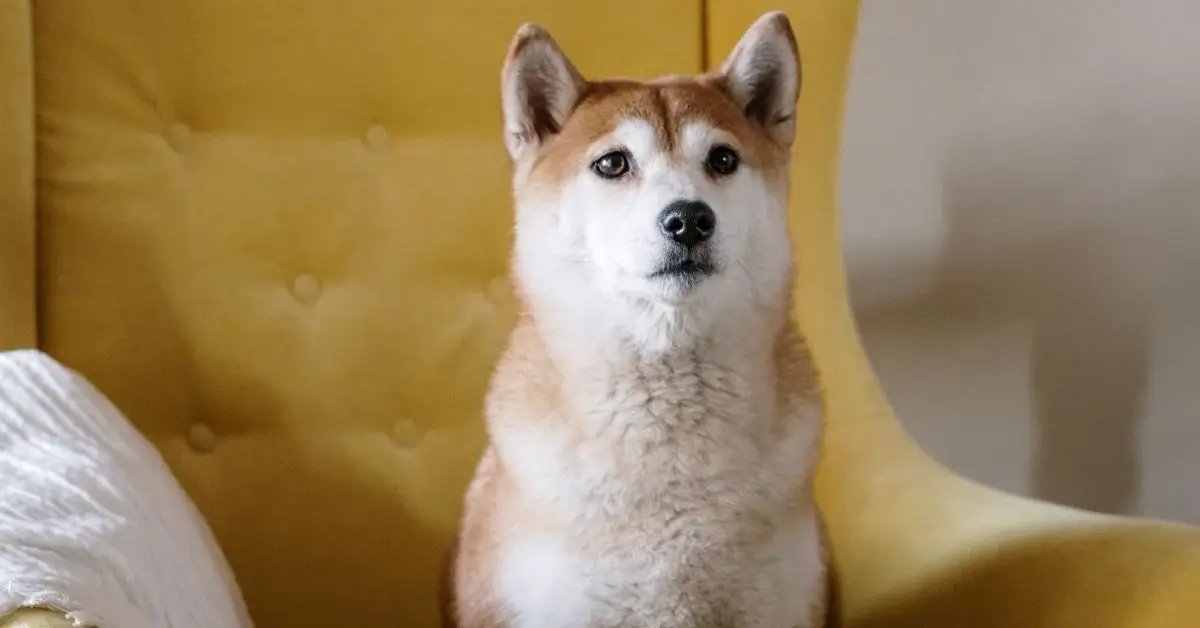A method to cleanse a dog’s face involves carefully tidying up around their eyes and nose. This activity can be enjoyable and significant, yet it might prove more challenging than cleansing their entire body. Employing soft methods is crucial since the eyes and noses of dogs are delicate. Being acquainted with the proper approach to clean a dog’s face can enhance the process and maintain your pet’s happiness.
Before you begin, gather the appropriate materials, such as warm water, a soft washcloth, and a gentle soap or shampoo specifically designed for dogs. With the proper technique and a calm, friendly approach, you’ll be able to keep your dog’s face fresh and clean without causing any discomfort or stress. Stick around to learn helpful tips and tricks to make a face washing a breeze for you and your beloved pet.
Preparing Your Dog for a Face Wash
Washing your dog’s face can be a little trickier than the rest of its body, but it becomes a manageable task with the right preparation and a gentle approach. This friendly guide’ll walk you through the steps to properly prepare your dog for a face wash.
Start by gathering the necessary supplies, including clean, warm water, a soft washcloth, and a gentle soap or shampoo. Opt for a dog-specific shampoo, as dogs have different pH levels in their skin compared to humans. Now that you have everything let’s get started!
Before you begin, ensure your dog is comfortable and relaxed to ease the process. Remove any loose dirt and tangles from your dog’s fur around the face, ears, and neck. You can do this by gently brushing the fur with your fingertips or with a suitable dog brush. Handling your dog’s face gently will help them feel more at ease during the face wash.
Next, dampen the soft washcloth with warm water and gently clean the areas around your dog’s eyes without using any soap or shampoo. This step is essential to remove tear stains and eye gunk safely. Remember to be very gentle during this process, as the eye area is susceptible.
After cleaning the eyes, wet another part of the washcloth and apply a small amount of gentle soap or shampoo. Carefully wash your dog’s forehead, cheeks, chin, and the areas around its mouth. Avoid scrubbing too hard, as this could irritate your dog’s skin and cause discomfort.
Once thoroughly washing your dog’s face with soap, rinse the washcloth, and remove any excess soap residue. Gently pat your dog’s face dry using a clean, soft towel.
How to Wash a Dog’s Face: Washing Steps
Caring for your furry friend means keeping them clean and comfortable, and Target Keyword is an essential part of the grooming process. Let’s dive into the washing steps to ensure your dog’s face stays fresh and dirt-free.
Before starting, gather your materials: warm water, a soft washcloth, gentle soap or shampoo specifically designed for dogs, and a towel. It’s important to use dog-friendly products since dogs have different skin pH than humans.
Begin by hand inspecting your dog’s face and removing any loose debris, such as grass or dirt. Pay special attention to their head, neck, chin, and ears. Next, dampen the soft washcloth with warm water and apply a small amount of dog-safe soap or shampoo. Gently clean the entire face, avoiding the eyes, which can be sensitive to soap.
After soaping up the face, use a fresh, wet cloth without soap to rinse off the suds. Remove all soap residue, as any leftovers can lead to irritation. Remember to clean your dog’s eyes with a wet cloth gently, but do not use soap or shampoo in this delicate area. Removing tear stains and eye gunk is crucial for your dog’s comfort and appearance.
When washing is completed, gently pat your dog’s face dry with a towel. Avoid rubbing their face, as this can cause irritation or skin issues. Your dog’s face should now be clean and refreshed, free of dirt and debris!
Drying and Post-Wash Care
Washing your dog’s face can be delicate, but ensuring a healthy and happy pup is essential. After successfully cleaning your furry friend’s face using a wet cloth and dog-friendly soap, it’s time to focus on drying and post-wash care. In this section, we’ll share some tips on how to dry your dog’s face properly and offer helpful advice for taking care of their sensitive facial areas.
Firstly, it’s crucial to gently pat your dog’s face dry with a soft towel. This will help remove any excess water and prevent possible irritation. Ensure you’re careful around sensitive areas like the eyes and ears, and avoid rubbing too aggressively, as this could cause discomfort.
Once your dog’s face is dry, you may notice lingering tear stains or traces of eye gunk. You can use a specialty dog eye cleaning solution or pre-moistened wipes designed for this purpose if needed. These wipes are gentle and safe for your dog’s eyes. Remember always to follow the product’s instructions and avoid using anything that isn’t specifically meant for dogs.
Brushing your dog’s facial hair is another essential step in post-wash care. Regular grooming helps prevent tangles and matting and keeps your dog’s facial hair looking neat. Use a small, soft-bristle brush or comb, and be gentle while brushing to avoid pulling or hurting your dog. Regular grooming ensures your dog’s face stays clean between washes.
Lastly, watch for any irritation or discomfort in your dog’s face after washing. This could include redness, swelling, or excessive rubbing of their eyes or ears. If you notice any issues, consult your veterinarian for further guidance.
Common Mistakes to Avoid

Washing your dog’s face can be delicate, as keeping your furry friend comfortable and safe is essential.
One common mistake pet owners make is using the wrong water temperature. Make sure to use warm water, which is more comfortable for your dog and can help remove dirt more effectively. Cold water may startle your dog, and hot water may cause discomfort or burns. For the best results, you can follow the suggestions on PetMD.
Another mistake to avoid is using harsh soaps or shampoos not specifically designed for dogs. These products can irritate your dog’s skin or eyes and lead to discomfort. Instead, opt for a gentle soap or shampoo formulated for dogs, as this Pampered Pup article mentions.
It’s also crucial to avoid getting soap or shampoo in your dog’s eyes. When cleaning the areas around your dog’s eyes, use a damp cloth without any soap, ensuring you’re gentle and careful in this sensitive area. For more guidance on this, refer to this wikiHow article.
Take the time to remove any loose dirt or debris before washing your dog’s face. Brushing your dog’s face and removing any tangles can help make the washing process smoother and more effective, as the American Kennel Club suggested.
Maintaining a Clean Face Between Washes
Caring for your dog’s face between washes is essential for their hygiene and health. Follow these simple yet effective tips to maintain a clean and healthy face for your furry friend.
First, remove loose dirt, debris, or grass from your dog’s facial hair. Using a wet cloth, gently wipe the face and area around the eyes. Avoid using soap or shampoo near the eyes to prevent irritation. Remember to check your dog’s head, neck, chin, and ears for any debris that may have been caught during their daily activities.
Brushing your dog’s facial hair regularly is another essential step in maintaining a clean face. Regular grooming helps remove dead hair, prevent tangles, and lessen the build-up of tear stains or eye gunk. Invest in a suitable brush for your dog’s hair type and make it a part of their routine.
Dogs, especially those with folds or wrinkles on their faces, require special attention. Use a soft, damp cloth to gently clean between the folds to prevent the growth of bacteria and yeast, which can lead to infections. Ensure the folds are always dry, as moisture can cause skin issues.
Lastly, monitoring your dog’s diet can also impact facial cleanliness. Some food ingredients may cause allergies, leading to excessive tear production and staining around the eyes. If you notice any changes, consult your vet to determine the best diet to reduce allergies and maintain a clean face.
FAQ:

What can I use to clean my dogs face?
You can use warm water, a soft washcloth, and gentle soap or shampoo to clean your dog’s face. Wet the cloth with soap and gently clean your dog’s look, including the areas around the eyes. Rinse using a fresh wet cloth, and avoid getting soap or shampoo in your dog’s eyes.
Is it okay to wash dogs face?
Yes, it is okay to wash your dog’s face. Keeping your dog’s face clean can help prevent tear stains and eye gunk buildup. Be sure to use a gentle soap or shampoo, avoid getting soap or shampoo in your dog’s eyes, and rinse thoroughly.
How often should you wash your dog’s face?
There is no set frequency for washing your dog’s face, but it is recommended to clean it regularly to prevent tear stains and eye gunk buildup. Depending on your dog’s breed and lifestyle, you may need to wash their face once a week or more frequently.
Do I need to wash my dogs head?
Yes, washing your dog’s head regularly is recommended to keep them clean and healthy. Use a warm wet washcloth and a small amount of dog shampoo to gently cleanse your dog’s head and face, being careful to avoid getting soap or water in their eyes or ears.
Can I spray my dogs face with water?
Spraying your dog’s face with water is generally not recommended as it can be stressful and cause fear or aggression. Instead, use positive reinforcement training techniques to correct your dog’s behavior.
How do I get the brown off my dog’s face?
To remove brown stains from your dog’s face, you can use a water-diluted hydrogen peroxide mixture or a mixture of hydrogen peroxide, milk of magnesia, and cornstarch. Apply the mixture to the stained area carefully with a cotton pad to avoid the eyes.
If you liked this blog article about the topic: How to Wash a Dog’s Face, don’t forget to leave us a comment down below to tell us about your experience.


